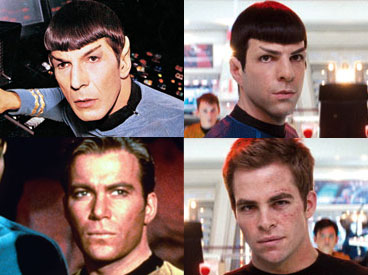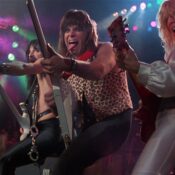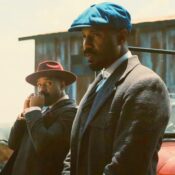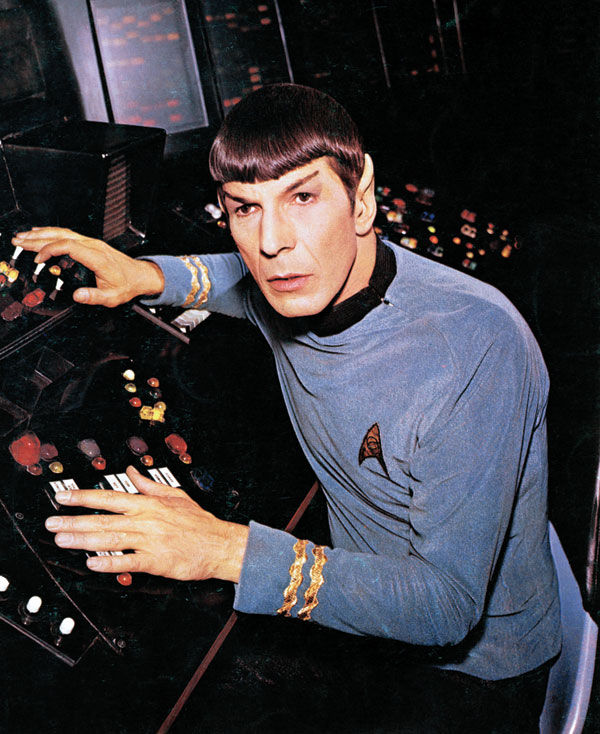
When Stewart first stepped on the bridge of the Enterprise, which looked bigger and a lot more high tech than the one in the original series, he didn’t expect a very long voyage. “It didn’t seem possible that we could keep up what Shatner and Nimoy and the others had delivered,” he says. “My friends told me TNG would probably last a year or two. We used to sit around on the set guessing when it would end. Nobody imagined that we’d be there for seven seasons. There were moments when I felt a little trapped, but I was hugely proud of what we created.
“Actually, in the beginning, the biggest moment of concern I had was during the costume fitting,” he adds with a laugh. “Someone was holding up this spandex body suit and I suddenly realized that was going to be my home. Thank goodness, we finally had it redesigned.”
Like Nimoy, Stewart feels that his Star Trek role had a profound effect on his life. “The things I developed in Picard were in Roddenberry’s first version of him,” he says. “I have tried to incorporate some of them into the way I live. I’m more patient than I was, and I try to hear both sides of an argument.”
As for the fans, Stewart sees them as a reflection of the diversity of the show’s appeal. “You come face-to-face with children, and they may be speechless, but you can see the wonder and thrill they feel for Star Trek in their faces,” he says. “Then you have serious encounters with people ranging from the Chairman of the Joint Chiefs of Staff to a university chancellor or senators and congressmen, and they confess to being addicts of the series. You never quite know who’s out there watching. By the way, there’s nothing like getting a good table in a restaurant because the maitre d’ is a Star Trek fan.”
Trying to analyze the continuing power of Star Trek, Burton says, “I think it’s partly because it offers a hopeful look at our future selves and our noblest aspirations. It also has that sense of awe and wonder that you feel when you look up into the night sky. We’re so insignificant and yet we’re connected to some greater force.
“I always saw Gene Roddenberry as a visionary,” he continues. “As a young black kid growing up it was hugely reassuring to see a future where Gene was saying to me, ‘You will be there, Mr. Burton. You will be represented.’ And so it was great to play a role on TNG that reinforces that for other black kids.”
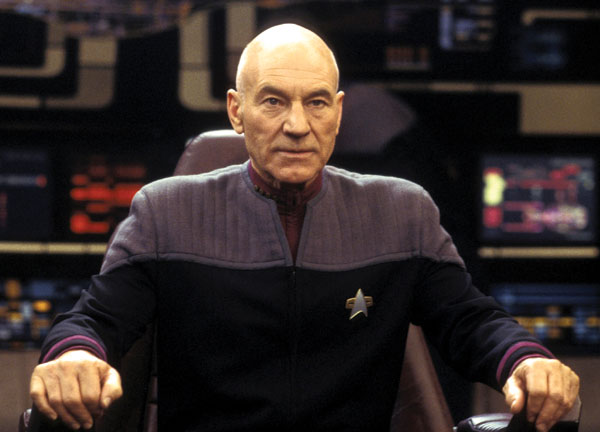
Courtesy Paramount/PhotoFest.
Star Trek: The Next Generation went on to success on the big screen while additional spin-off series kept exploring the new face of American culture. There was Deep Space Nine set on a space station with the first African-American captain played by Avery Brooks. It was followed by Star Trek: Voyager with the first woman, Captain Janeway, played by Kate Mulgrew, leading the spaceship on a journey back to earth through the galaxy after being thrown off-course. Finally, there was the less successful Star Trek: Enterprise—a prequel to the original—which ended in 2005.
And then, for the first time in years, there was no new Star Trek on the horizon. It seemed as if the unflagging appetite of generations of Trekkers for more adventures had finally, well, flagged. But then Abrams, the creator of the TV series Alias and Lost as well as director of Mission Impossible III, took on the daunting task of revitalizing and re-imagining Star Trek as a major movie.
To achieve this, Abrams says, he realized he had to go “back to the beginning of the brilliant world that Gene Roddenberry created. It was full of optimism and it was about us and our future.”
Abrams began with a bold step, becoming the first director of a Trek film to cast new actors in the roles owned by Shatner and Nimoy. Chris Pine was James Kirk and Zachary Quinto played Spock in the prequel that followed the disparate pair from their childhood in different worlds to their rivalry as cadets in training to their adversarial relationship on their first mission aboard the Enterprise.
How did the young actors feel about stepping into the shoes of actors who had become legends for playing these roles? “I had never met William Shatner,” Pine says. “I wrote him a letter and said, ‘Look, I’m an actor. I got this role that happened to be the role that you originated. I’m just trying to add to this character.’ And he wrote me back and said, ‘I wish you all the best luck in the world. Best, Bill.’ I put it up on my refrigerator.”
Because Nimoy, after some urging from Abrams, agreed to play an older Spock in the film, Quinto didn’t have to write him a fan letter. “I first met him on an elevator,” Quinto remembers. “I said, ‘I’m Zach, and I’m playing you.’ At that moment, the elevator stopped and before he got off Leonard turned and said, ‘You have no idea what you’re in for, kid.’”
Abrams’ Star Trek was loved by both critics and audiences as it became the highest grossing Trek film ever, taking in over $250 million. “The story takes us to some grim places, but in the end, there’s a sense of whimsy. There’s fun in it, and an innate sense of optimism,” says Geoff Boucher, senior editor at Entertainment Weekly about Abrams’ version.
Roddenberry would have liked that, Boucher adds. The guy who wrote his daydreams understood that stories about our hopes and fears would never get old. And in the end, that’s the magic of Star Trek. No matter how far away the Enterprise traveled in the galaxy, it always reflected the human dimensions of the journey. It’s never stopped being an optimistic journey, an adventure, and one hell of a ride.
So you’ve seen all the movies and watched all 716 episodes. But do you have what it takes to move through the ranks of the Starfleet Academy? Find out now: Trek Trivia.
Become a Saturday Evening Post member and enjoy unlimited access. Subscribe now
